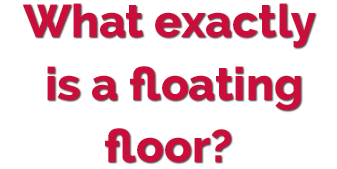What exactly is a floating floor?
The term floating floor can be slightly misleading and especially to somebody that doesn’t know much about the flooring industry can sound like the floor covering is fitted on top of water! To interpret a floating floor in this way may sound silly, however, there’s no doubting that it’s a confusing use of words. Well, let’s briefly clear this up for you and explain exactly what a floating floor is..
The term ‘floating floor’ has become more widely used since the introduction of floor covering types such as laminate flooring and over more recent years with the huge increase in engineered wood floors being produced that are designed to be fitted on top of an underlay.
‘Floating‘ and ‘overlay‘ are often equated to the same thing. It’s easy to misunderstand the term overlay and think of it being the same as floating as essentially fitting a floor covering on top of an underlay can be seen and interpreted as overlaying or floating. Which is a broadly correct assumption. However, an overlay floor can be slightly different as it can be fitted on top of a sub-floor by means of fixing it directly with the use of adhesives, nails or screws and without the use of an underlay. Therefore, a clear distinction should be made when considering your floor covering and installation options. To give an example, a solid wood floor that is installed by nailing direct to floor boards is classed as an overlay and certainly not classed as floating. This is good information to have in mind, as to clearly defining what a floating floor is.
A floating floor is any floor covering that isn’t fixed directly to the sub-floor or perimeter i.e. walls or door frames, in any way. In other words, the wood floor would simply be installed on top of an underlay, with the only thing keeping it in place being its own weight.
Written by fitmywoodfloor
